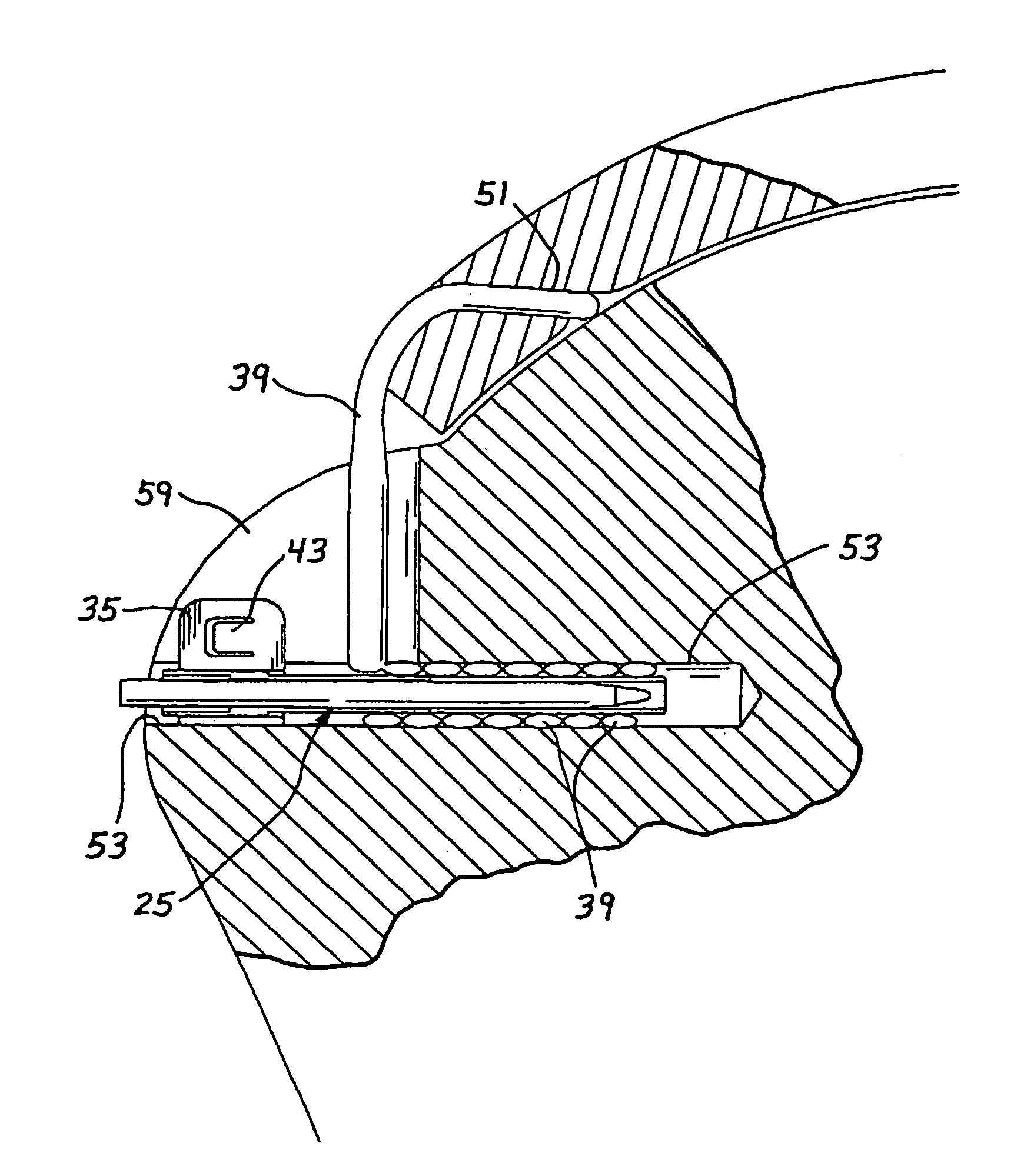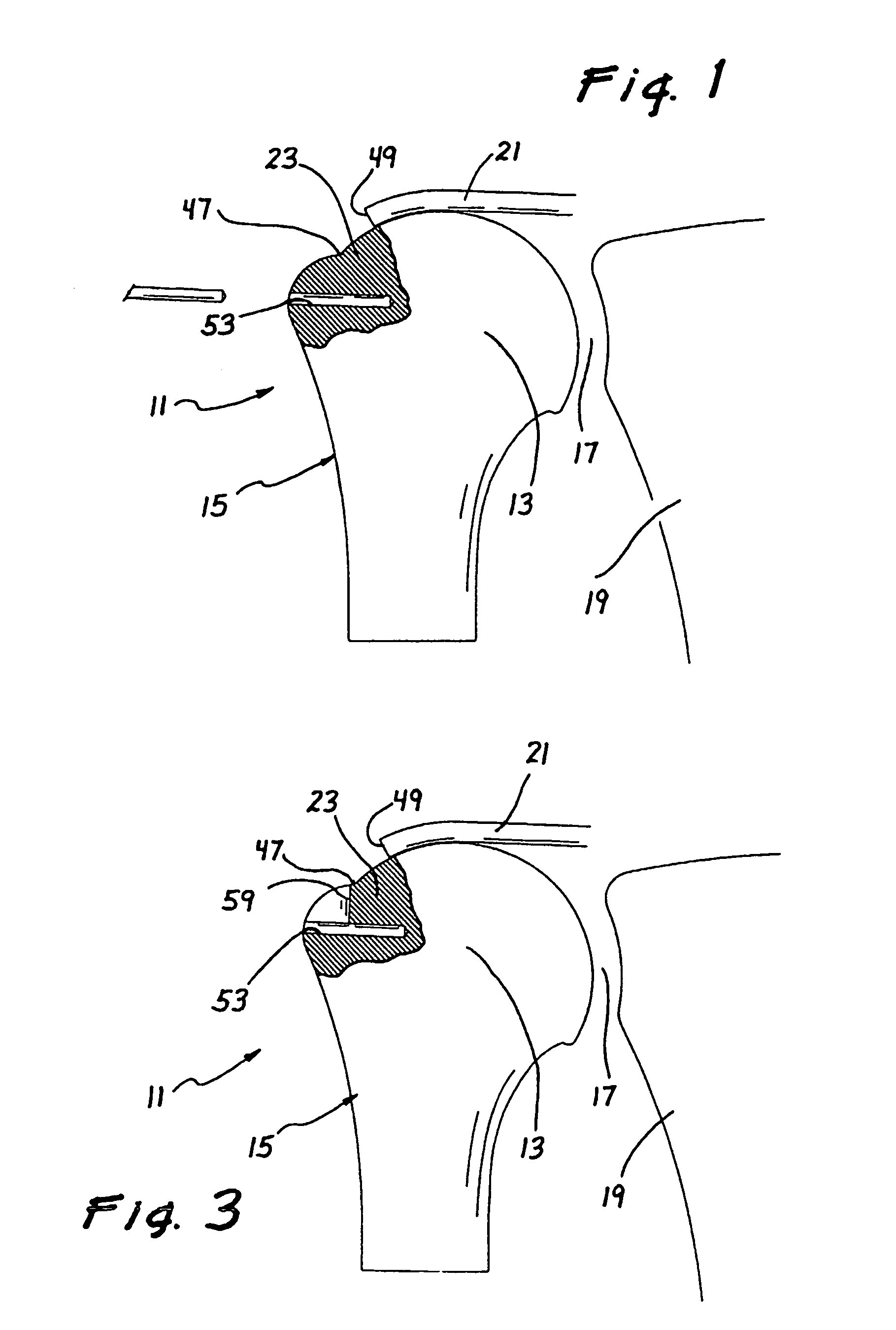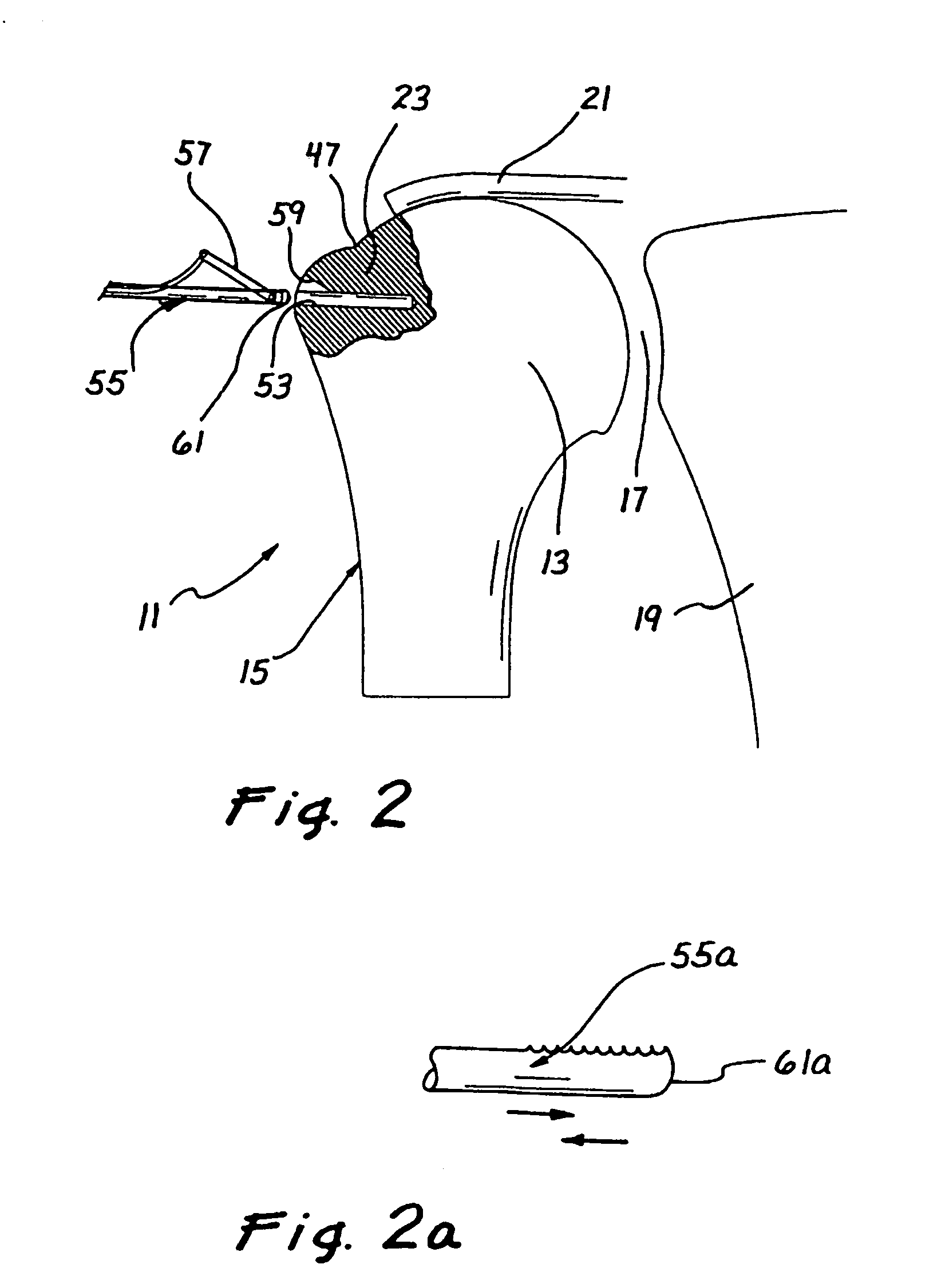Methods for attaching connective tissues to bone using a multi-component bone anchor
a multi-component, bone anchoring technology, applied in the field of methods and apparatus for attaching soft tissue to bone, can solve the problems of increasing the difficulty of articular joint extension, pain and loss of the ability to elevate and externally rotate the arm, residual weakness, etc., to achieve the effect of reducing failure rates, concentrating stress, and facilitating operation
- Summary
- Abstract
- Description
- Claims
- Application Information
AI Technical Summary
Benefits of technology
Problems solved by technology
Method used
Image
Examples
Embodiment Construction
[0061]Referring now more particularly to the drawings, there is shown in FIG. 1a portion of a partially torn rotator cuff 11. In the illustration, which is simplified for purposes of clarity, a globular head 13 of a humerus 15 is disposed in a glenoid cavity 17 formed by a scapula 19. A supraspinatus tendon 21, the end of which is normally fully attached onto a facet of a greater tuberosity 23, is shown in a detached condition, resulting in a diagnosis that the rotator cuff has been torn.
[0062]Now with particular reference to FIGS. 7 and 8, there is illustrated one preferred embodiment of a knotless suture anchoring device 25 constructed in accordance with the principles of the invention. In its preferred configuration, the anchoring device 25 comprises a hollow stem or shaft 27, having a longitudinal axis 28 and a periphery. A pair of longitudinal slits 29 extend along a portion of a distal section of the shaft 27 from its distal end 31, and a wider and shorter recess 32 may also b...
PUM
 Login to View More
Login to View More Abstract
Description
Claims
Application Information
 Login to View More
Login to View More - R&D
- Intellectual Property
- Life Sciences
- Materials
- Tech Scout
- Unparalleled Data Quality
- Higher Quality Content
- 60% Fewer Hallucinations
Browse by: Latest US Patents, China's latest patents, Technical Efficacy Thesaurus, Application Domain, Technology Topic, Popular Technical Reports.
© 2025 PatSnap. All rights reserved.Legal|Privacy policy|Modern Slavery Act Transparency Statement|Sitemap|About US| Contact US: help@patsnap.com



